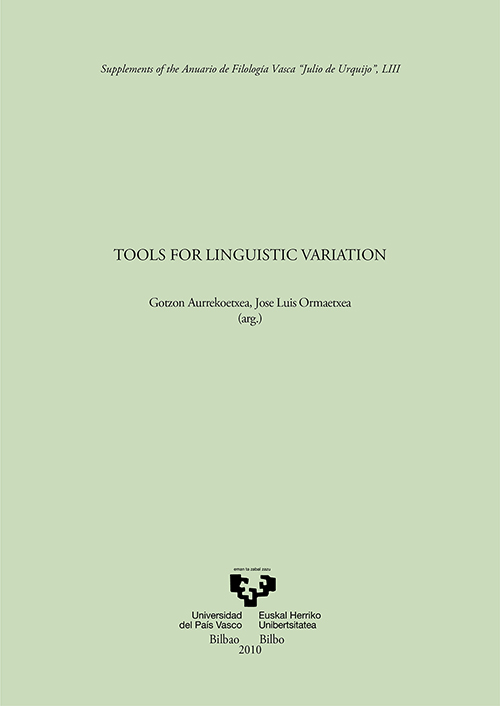Some further dialectometrical steps
##plugins.themes.bootstrap3.article.main##
##plugins.themes.bootstrap3.article.sidebar##
Argitaratua
2010-02-22
John Nerbonne
Jelena Prokić
Martijn Wieling
Charlotte Gooskens
Laburpena
This article surveys recent developments furthering dialectometric research which the authors have been involved in, in particular techniques for measuring large numbers of pronunciations (in phonetic transcription) of comparable words at various sites. Edit distance (also known as Levenshtein distance) has been deployed for this purpose, for which refinements and analytic techniques continue to be developed. The focus here is on (i) an empirical approach, using an information-theoretical measure of mutual information, for deriving the appropriate segment distances to serve within measures of sequence distance; (ii) a heuristic technique for simultaneously aligning large sets of comparable pronunciations, a necessary step in applying phylogenetic analysis to sound segment data; (iii) spectral clustering, a technique borrowed from bio-informatics, for identifying the (linguistic) features responsible for (dialect) divisions among sites; (iv) techniques for studying the (mutual) comprehensibility of closely related varieties; and (v) Séguy's law, or the generality of sub-linear diffusion of aggregate linguistic variation.
Nola aipatu
Nerbonne, John, Jelena Prokić, Martijn Wieling, eta Charlotte Gooskens. 2010. «Some Further Dialectometrical Steps». Anuario Del Seminario De Filología Vasca "Julio De Urquijo", otsaila, 41-56. https://doi.org/10.1387/asju.9889.
##plugins.themes.bootstrap3.article.details##
Atala
Artikuluak
Lan hau Creative Commons Aitortu-EzKomertziala-LanEratorririkGabe 4.0 Nazioartekoa lizentzia baten mende dago.


